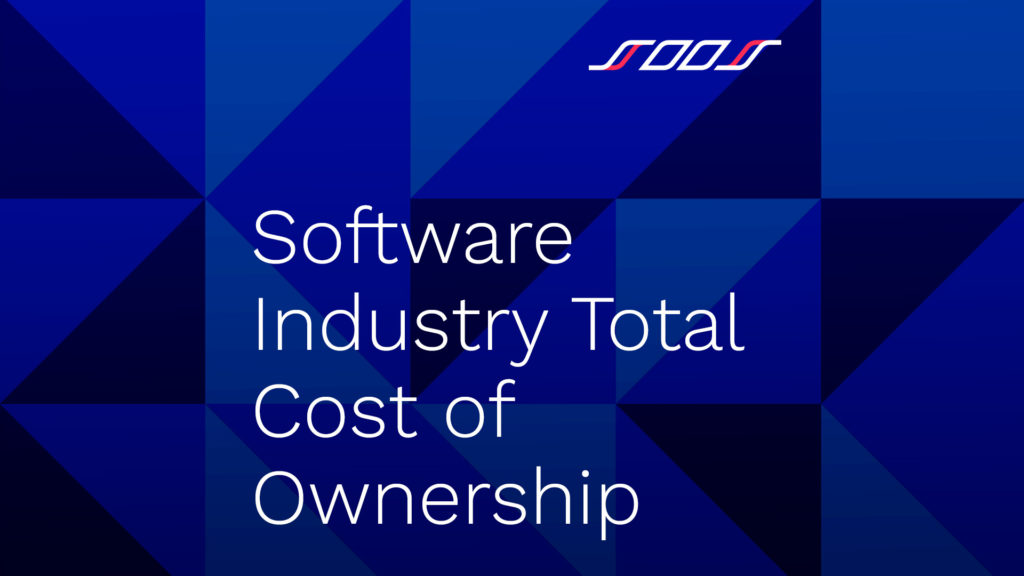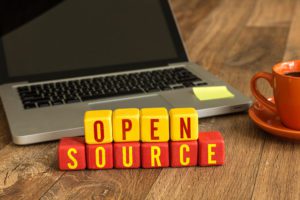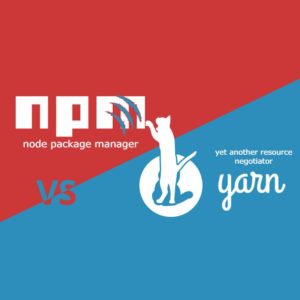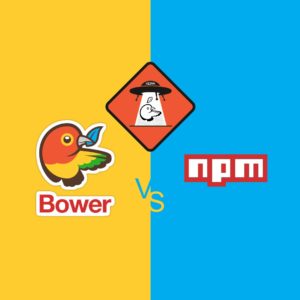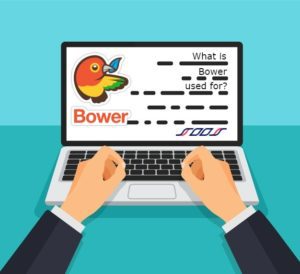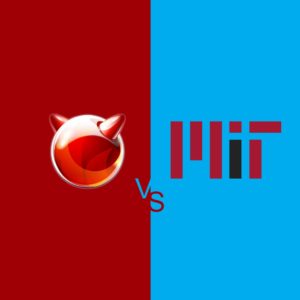ROI is a primary concern for any enterprise undertaking, and enterprise software projects are no different. The total cost of ownership is a valuable input to an accurate ROI projection. Unfortunately, many businesses and IT leaders don’t take all the costs of the different options the software industry offers into consideration. Those oversights can lead to underestimating the entire investment required to get the solution up and running and keep it operating reliably.
Though there are also hybrid solutions, three primary types of software implementations are typically considered:
- Cloud software
- Off-the-shelf software installed on-premises or hosted at a data center
- Custom software
Each has cost considerations that must be thoroughly evaluated to arrive at an accurate total. Unfortunately, preconceived ideas, such as those for outsourcing costs, may cloud judgment, affect decisions, and ultimately lead to underestimating expenses. Decision-makers must understand how to evaluate the total cost of ownership to avoid unpleasant and costly surprises later on.
Total Cost of Ownership Formula
The total cost of ownership is the total expenditure for purchasing or developing, implementing, and managing your IT solutions. These aspects are part of the equation, whether you manage your solutions directly or indirectly. A common pitfall for many companies is focusing only on the acquisition or build. While this is often the bulk of the costs, it is far from the only significant consideration in the total cost.
This calculation emerged in the mid-’80s as more IT and business leaders realized the significance of long-term maintenance costs. Over the solution’s lifetime, software and equipment expenses could reach five to eight times the initial purchase or development price. TCO takes all expenditures related to acquiring the software combined with applicable lifetime personnel and operational costs. The formula includes:
- Acquisition or development costs
- Physical hardware costs
- Operating or maintenance costs, including personnel
To illustrate, consider this total cost of ownership example:
Company A has decided to implement a new enterprise software system and has agreed to the price to purchase the licenses to operate the software and have it installed and configured. However, that is far from even the initial cost. The TCO would need to include hardware, onboarding, training, maintenance, support, hosting, data center, upgrades, patches, external system interfaces, and potential customization, as well as potential impacts to productivity for downtime.
Cloud Cost of Ownership
Cloud solutions’ pricing details can vary according to provider and solution needs. For example, look at the Amazon Web Services pricing model. AWS total cost of ownership comprises the following elements:
- Elastic Load Balancing
- Amazon EC2
- Amazon Elastic IP address
- Amazon RDS for MySQL
- Amazon Route 53
- Amazon Virtual Private Cloud
While AWS makes its pricing transparent for easy cloud TCO calculation, managers should be aware of common oversights when considering and implementing any cloud solution. These missteps can drive the overall cost up significantly:
- Failure to use monitoring tools and auto-scaling
- Misconfigured storage resources
- Misaligned data types and storage class
- Over-provisioned resources
- Failure to choose the optimal pricing for usage requirements
- Reliance on older technologies
Software Industry Startup Costs
When an organization begins comparing solutions, it must evaluate all the costs involved, from initial implementation to operational support. While you may expect experienced management teams to be aware of the expenses that should be included, you’d be surprised how often significant elements of startup costs and continued support and maintenance costs for the solutions can be overlooked during the cost evaluation. Fortunately, you can avoid that problem by knowing what comprises the total cost of ownership. Let’s break down what that looks like.
Development Costs
- Software – When purchasing off-the-shelf software, consider not only the price of the solution but the required user licenses and any interest costs with financing.
- Implementation – Implementation for an off-the-shelf product includes installation, configuration, testing, backups, and failover solutions for disaster recovery. Setup costs are typically considered part of development costs in a custom solution.
- Data Migration – Moving data from an old system can be a significant undertaking, particularly when considering required format changes. When the projected data migration costs exceed the available budget, one must consider the expenses for archiving the old system and inputting data into the new system.
- User licenses – This element does not apply to custom software but should be considered for off-the-shelf software. You’ll need to consider two types of user licenses: named and simultaneous.
- Training – Training for any new software must include all support, admin, and end-users.
- Customization – Management teams need to consider the cascading impacts of customizing an off-the-shelf solution, for instance, the inability to apply provided updates or security patches. Once customized, you may have to spend even more time customizing or troubleshooting updates or other software that should seamlessly integrate with it.
- External system interface costs – How easily will your new solution integrate with existing systems? Factor in any work required to integrate and test these interfaces.
Hardware Costs
- Hardware – Hardware can be a significant investment if you haven’t chosen a cloud solution. Don’t forget to include the expenses for running the servers, storage, backup, and disaster recovery.
Management Costs
- Software support and maintenance – With most commercial software solutions, support and maintenance are part of an annual contract with the provider. The contract ensures you stay current with all upgrades and patches. The support contracts can total 20%-25% of the purchase price annually.
- User licenses – When purchasing user licenses for commercial software solutions, you must consider not only your current users but any new users as your company expands. Cloud software user licenses are priced per month.
- Training – In addition to training for the initial implementation, you must also consider any training for new users when hired and additional training for any significant updates or enhancements.
- Enhancements – All costs related to the enhancement should be accounted for when changes must be made to custom or off-the-shelf software, whether for new functionality or to comply with new regulations. They may include development, testing, documentation, and project management expenses.
- User & admin support – Remember that user and admin support have not only help desk employees but analysts and developers, along with the fully loaded cost of recruitment and management.
- Disaster recovery & high availability – Though most cloud solutions have availability and disaster recovery as part of their services, you should also account for the risk of the vendor going out of business. With hosted or on-premise software solutions, you’ll need to factor in costs for backups, hot failovers, and periodic testing.
- Datacenter – All expenses to operate your data center, from rack space to power to security to management and maintenance of the center, must be accounted for. Hosted data centers typically include these expenses in their monthly cost.
- Downtime – The lost productivity incurred when the solution is unavailable can be significant. That’s why hot failover solutions are more than worth the investment. Cloud software typically has those capacities included in the monthly or annual costs.
- Depreciation – As with any capital asset, you have to write off the price of both the software and hardware that comprise the solution. Cloud software is the exception because the costs are considered an operational expense.
- Upgrades – Upgrades are a consideration for custom and off-the-shelf software over the useful life of the product. Depending upon the scope of the upgrade, costs could be significant, and there could be a risk for downtime during cutover and potential fallback.
- Security – Security is a critical aspect of any enterprise software, as the risk of intrusion could be catastrophic. Considerations include not only the software but testing before applying any patches. Cloud software vendors absorb the cost of security.
Look Beyond Initial Price for the True Total Cost of Ownership
Acquiring, implementing, and managing an enterprise software solution is a significant investment. Decision-makers must understand what costs could be incurred over the useful life of the product to forecast the ROI of different solutions accurately. While many of the most common considerations have been covered here, there could be others depending upon whether you have chosen a hybrid solution or other factors particular to your preferred implementation.
Your software security is one aspect of your enterprise solution that doesn’t have to break the bank or require advanced math to compute the cost. SOOS offers an easy-to-integrate software composition analysis solution for open-source software to scan for new dependencies, vulnerabilities, and unwanted license types. It also simplifies completing compliance worksheets and generating SBOMs.
Preventing security vulnerabilities requires the awareness that they exist. That means continually scanning to uncover them. To learn more about what SOOS can do for you, visit us online today.

